Roasted Butternut Squash
5
Published Nov 11, 2023, Updated Jan 21, 2024
This post may include affiliate links. Thank you for your support.
Here’s the best way to make roasted butternut squash that turns out perfectly tender and caramelized. It’s easy to make, delicious and is the perfect side dish or can be used in salads, soups, pasta and more.
I’ve been on quite a roasted veggie kick lately!
Since I’ve already shared how to roast delicata squash, how to make roasted acorn squash and delicious roasted kobucha squash, I figured it was finally time to share how to roast one of my favorite winter squashes – butternut squash!
This is a great recipe to have in your back pocket because it’s perfect for meal prep and can be used in so many different recipes.
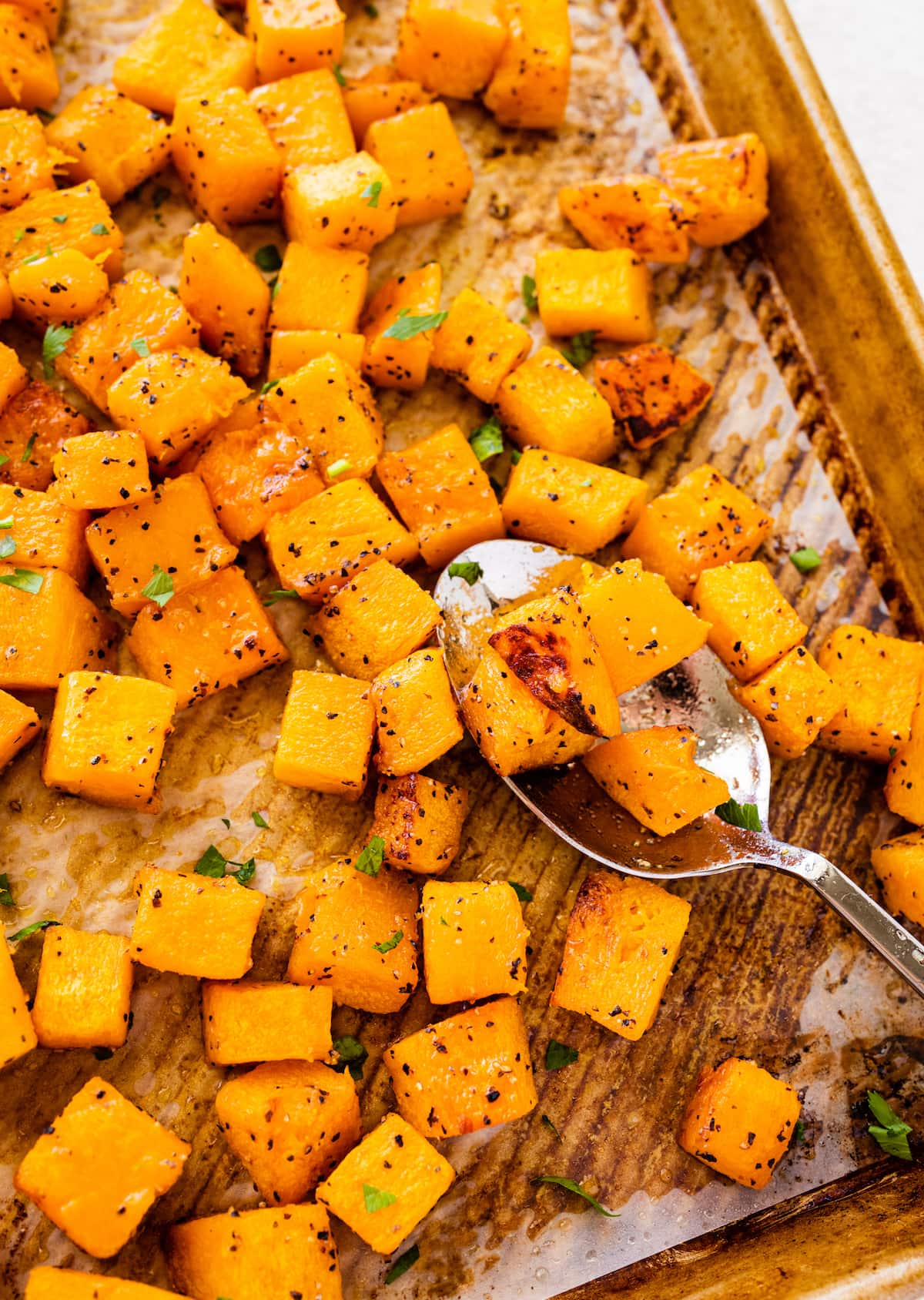
Why You’ll Love This Recipe
- Simplicity at Its Best: With minimal prep and a straightforward cooking process, you’ll appreciate the ease of making this dish.
- Naturally Sweet: Roasting brings out the butternut squash’s inherent sweetness, making it a hit with all ages.
- Versatile Side: This dish pairs beautifully with a variety of main courses, from roasted meats to vegetarian entrees.
- Healthy Choice: Butternut squash is packed with vitamins, fiber, and antioxidants, offering a nutritious boost to any meal.
- Customizable: The basic recipe is a perfect canvas for your favorite herbs and spices, so you can tailor it to your taste.
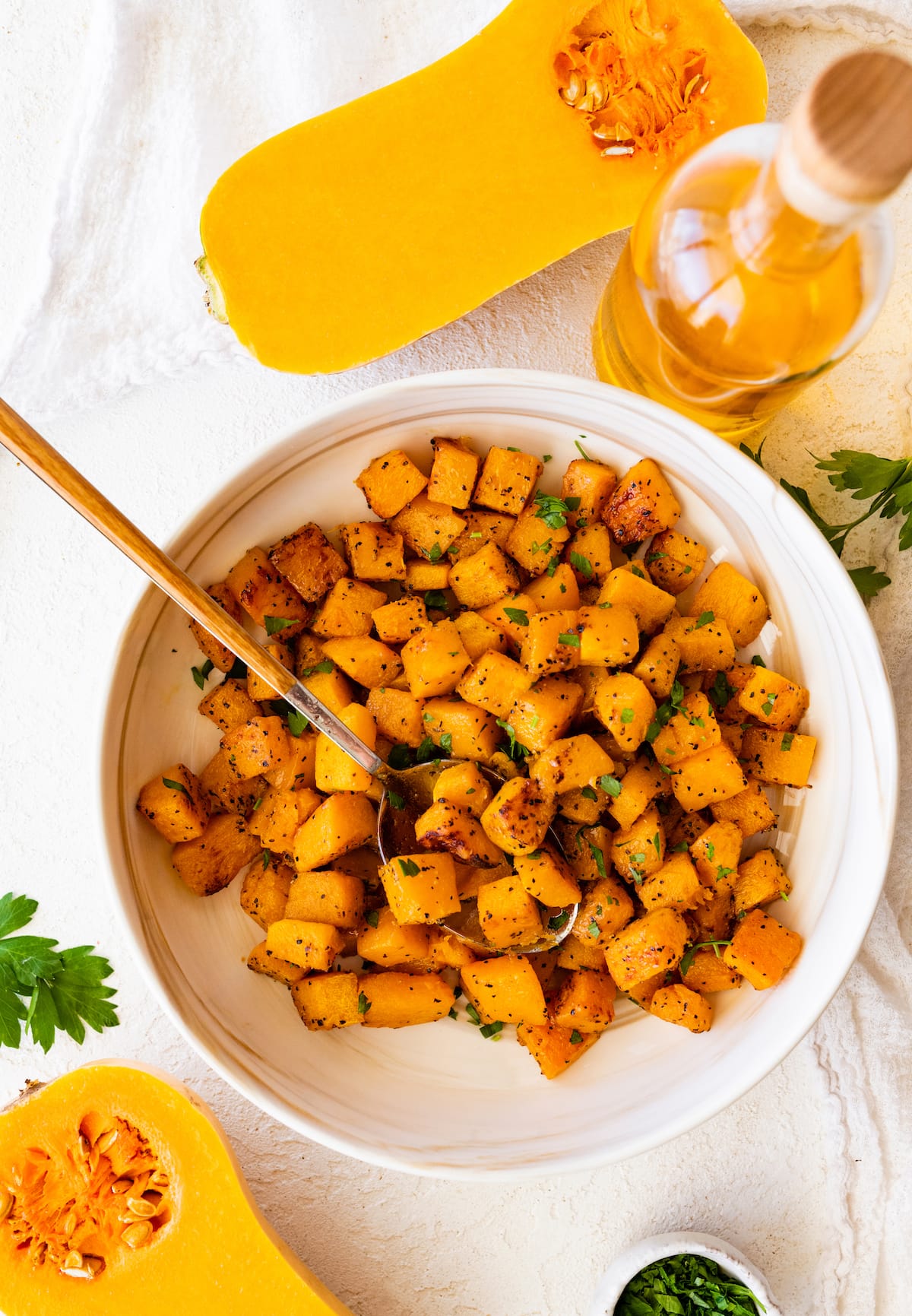
Butternut Squash Nutrition
Oh my, butternut squash is a powerhouse vegetable! It’s low in calories but high in a variety of vitamins and minerals – most notably vitamin A, vitamin C, magnesium and potassium. It’s packed with antioxidants and fiber and is a great ingredient to start adding into your diet.
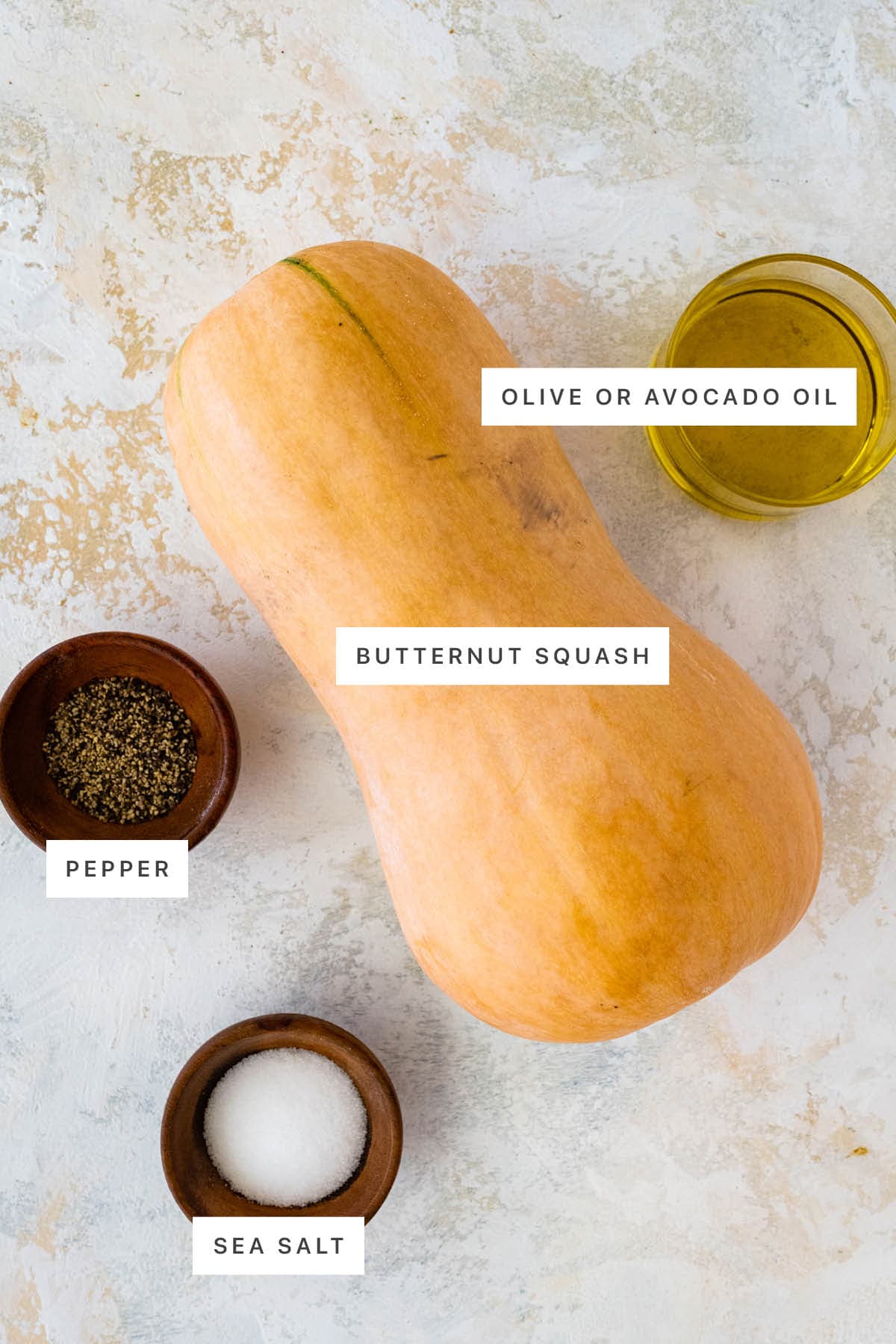
Roasted Butternut Squash Ingredients
- butternut squash – you’ll need one medium-sized butternut squash for this recipe. You can usually find butternut squash year round but it’s in season in the fall and winter months. Look for a squash that is heavy for its size, has smooth, firm skin without many cuts or bruising. The bigger the base of the squash, the more seeds there will be.
- olive oil or avocado oil – helps get your squash cubes nice and crispy. I used olive oil, but avocado oil works just as well.
- sea salt and black pepper – we’re keeping things simple with just salt and pepper. These will enhance the squash’s natural flavors.
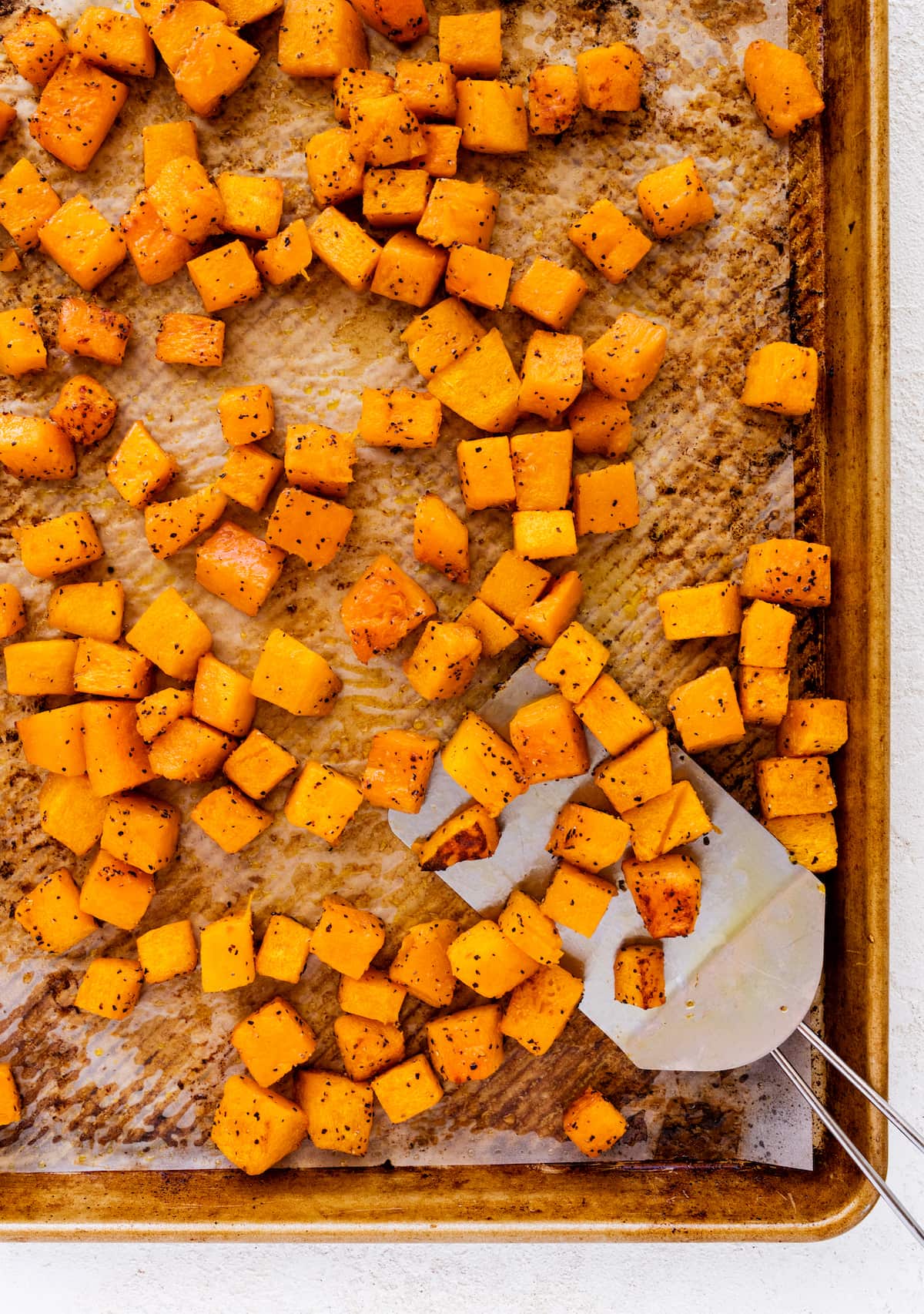
How to Roast Butternut Squash
Prepare the squash – Start by peeling the squash, cutting it in half lengthwise and scrape out the seeds.
Cut – Cut the squash into 1 inch cubes, toss them in oil and a pinch of salt. Spread the cubes onto a baking sheet.
Roast – Roast the squash at 400ºF for 30-40 minutes, turning once or twice until all of the pieces are tender and some have brown spots.
Don’t need cubes? You can also just roast each half of the squash instead of chopping into cubes. Prep the squash by peeling, cutting in half lengthwise and scraping out the seeds. Then coat with olive oil and sprinkle with sea salt. Roast at 400ºF for 30-40 minutes!
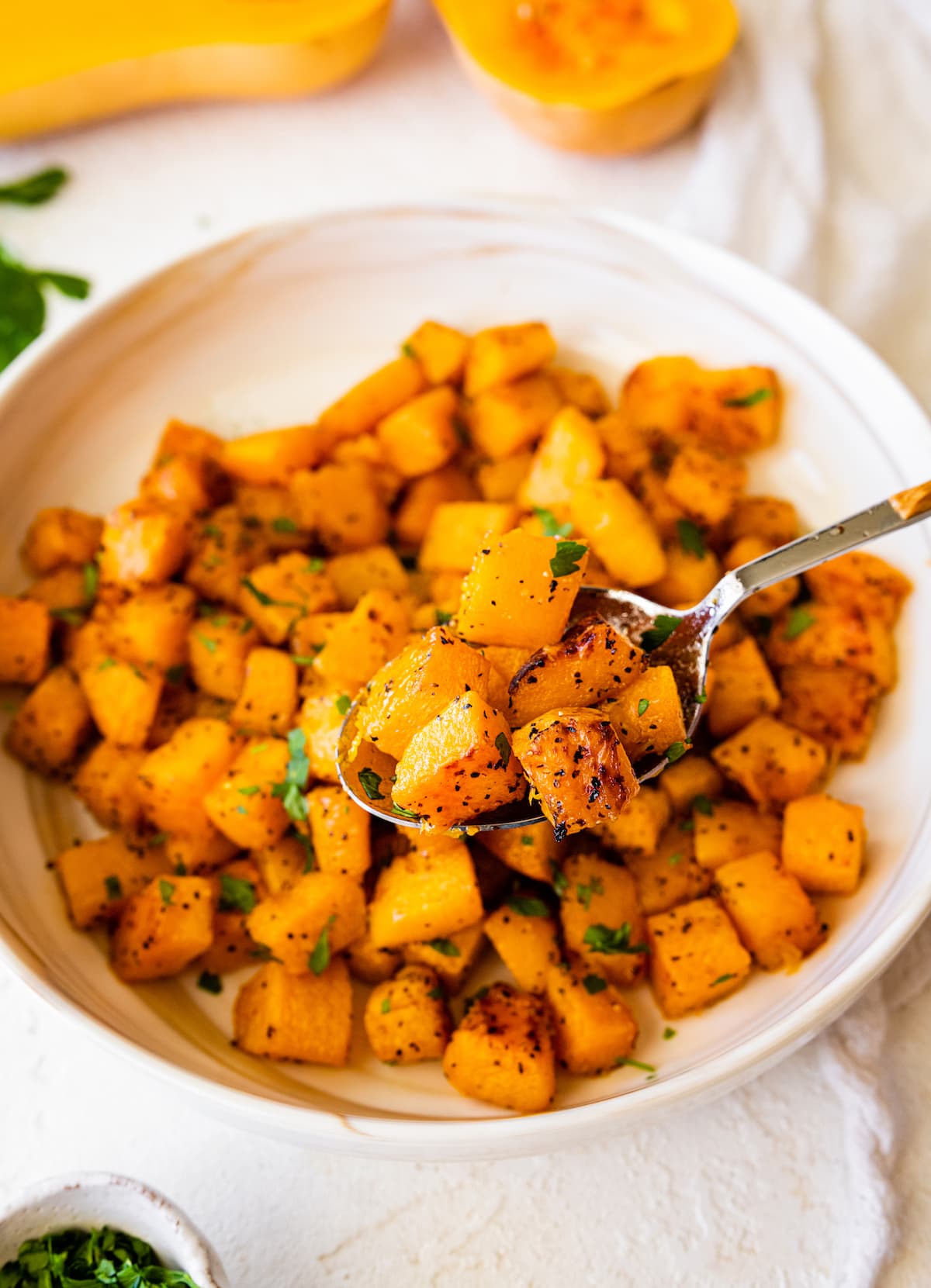
How to Peel and Chop Butternut Squash
If you’ve never cooked with butternut squash before, prepping is the hardest part! While it is technically edible, butternut squash’s skin is pretty tough so it’s typically recommended that you peel it before roasting.
Here are my tips to make the peeling and chopping process less daunting.
Step 1: Using a vegetable peeler or knife, carefully peel the skin, getting as close to the end of the squash as possible. When peeling, stop when you get to the orange flesh, it’s usually only one layer.
Step 2: After peeling, cut the top and bottom of the squash and then cut the squash in half widthwise and lengthwise so the squash is quartered.
Another option is to leave the neck of the squash whole and cut it into rounds, then stack up the round and cut them crosswise (twice) to create cubes.
Step 4: Use a spoon to scrape the seeds (and gunk) out of each half. Discard the seeds or save and roast them up for a snack. At this point you’re ready to chop the squash into cubes. I like to do 1/2-1 inch thick cubes. I try to cut them as even as possible so that they all finish cooking around the same time.
Recipe Tips
You can microwave to soften: I haven’t needed to do this, but if your butternut squash is too hard to cut with the knife you’re using, you can use the microwave to soften it up first! Poke about 4-5 holes throughout the squash (so it doesn’t explode) and microwave for 3 minutes. Let cool and then chop.
Even Pieces: Cut the squash into even-sized pieces to ensure they roast evenly.
Season Well: Before roasting, toss the squash with olive oil, salt, and any other desired spices to enhance its natural sweetness.
Space Out: Spread the pieces out on the baking sheet in a single layer with space between them to promote even browning and to avoid steaming.
Use Parchment Paper: Line your baking sheet with parchment paper for easy cleanup and to prevent the squash from sticking.
Experiment with Flavors: Try adding a sprinkle of cinnamon, nutmeg, or a drizzle of maple syrup before roasting for a different flavor profile.
Preheat Your Pan: For an extra caramelized exterior, preheat your baking sheet in the oven before adding the squash.
Check for Doneness: Start checking the squash at around 20 minutes, then periodically after that, as cooking times can vary based on the size of the pieces.
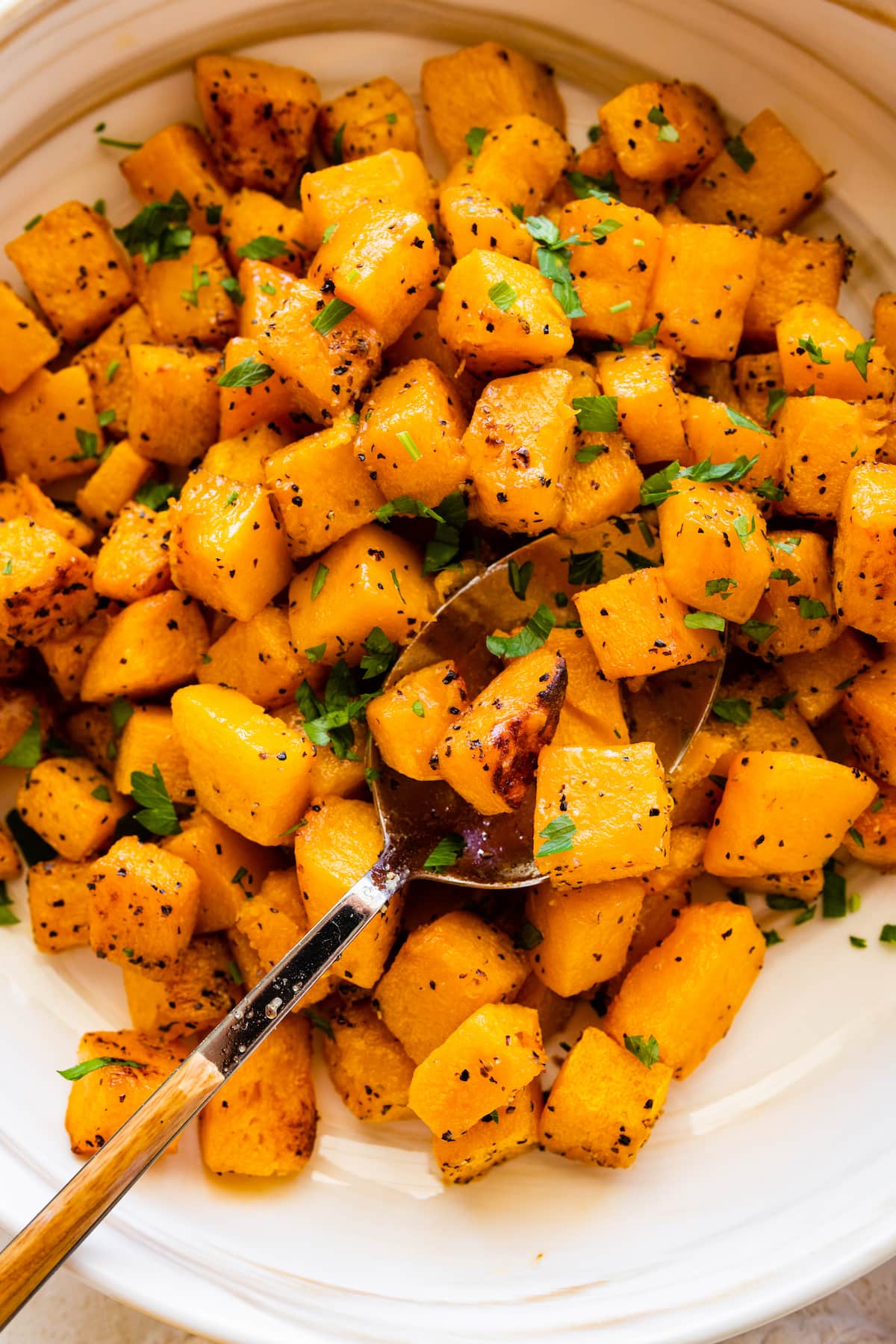
Variations
The fun thing about roasted vegetables is that the flavor combinations are endless. Here are some of my favorite variations for roasted butternut squash:
- Additional seasonings – Add some garlic powder, onion powder, paprika, chili powder or dried herbs before air frying. It’s a great way to introduce a new flavor!
- Add fresh herbs – Toss in some fresh herbs like rosemary, oregano, sage, or thyme right after the squash comes out of the oven for some nice freshness.
- Spicy – For some heat add a dash of cayenne pepper or red chili flakes.
- Sweet – For a sweet version, toss the cooked butternut squash cubes with a mixture of cinnamon and a splash of maple syrup or brown sugar.
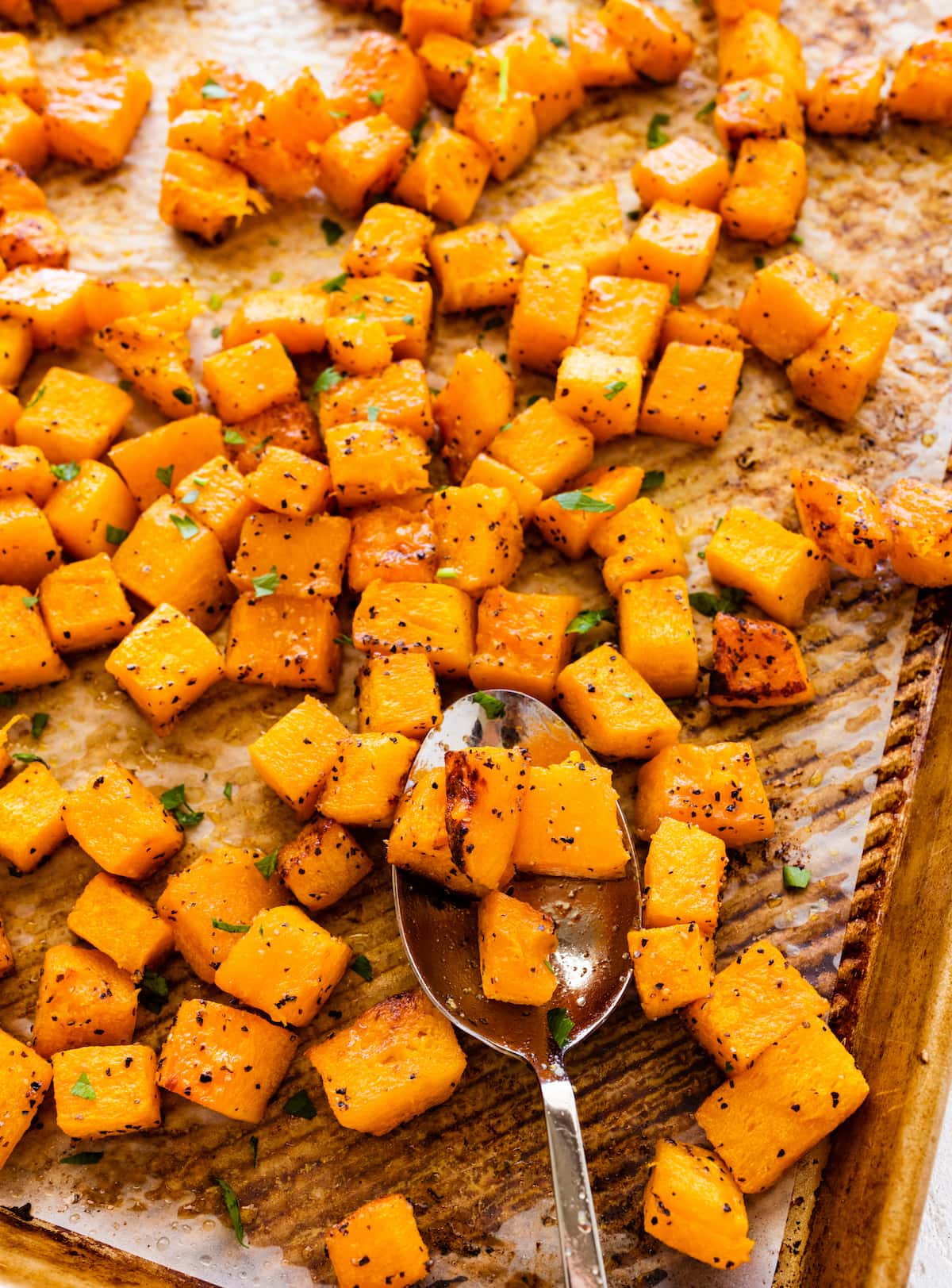
What Does Butternut Squash Go With?
Butternut squash pairs with a ton of different things! Here are some ideas:
- sweet spices: cinnamon, nutmeg, ginger and cardamom
- herbs: sage, rosemary, thyme
- produce: onions, parsnips, sweet potatoes, turnips, carrots, apples, pears
- proteins: chicken, turkey, sausage, eggs
- misc: rice, quinoa, pasta, pizza, pine nuts
I personally love making roasted butternut squash for meal prep and pairing it with a protein and a grain for an easy meal. If you want to try a more comprehensive recipe with roasted butternut squash, here are some of my go-to’s:
- Roasted Butternut Squash Salad
- One-Pan Roasted Chicken with Butternut Squash and Brussels Sprouts
- Vegetarian Sheet Pan Dinner with Tofu, Chickpeas and Butternut Squash
- Roasted Butternut Squash Pasta with Tahini Sauce
- Naan Pizza with Butternut Squash and Pesto
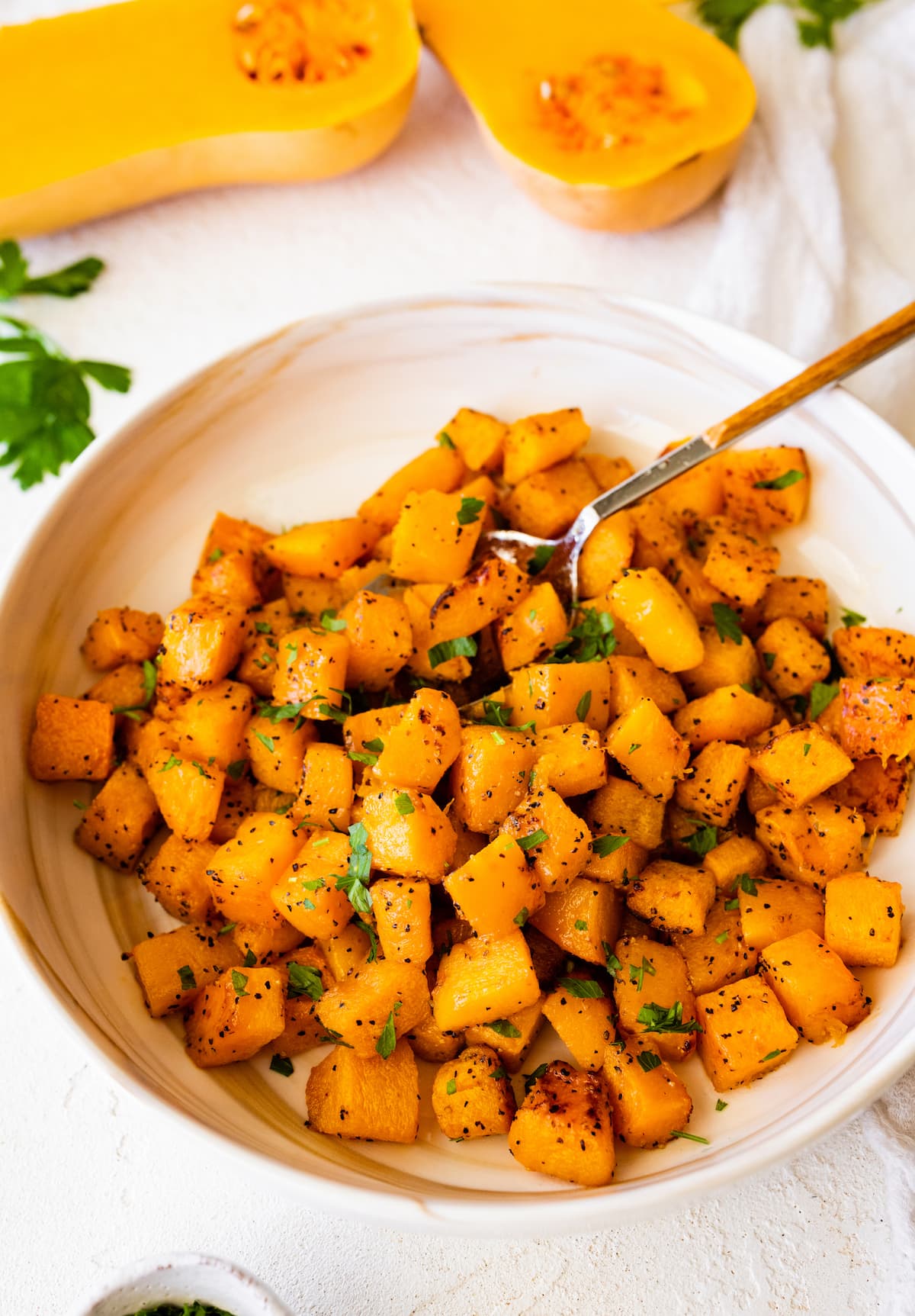
Storing Leftovers
Cool Down: Allow the roasted butternut squash to cool to room temperature before storing to prevent condensation that can lead to sogginess.
Airtight Container: Place the cooled squash in an airtight container to keep out moisture and other flavors from the fridge.
Refrigerate: Store the container in the refrigerator where the squash will keep well for up to 5 days.
Freezing: For longer storage, roasted butternut squash freezes well. Spread the pieces on a baking sheet to freeze individually, and then transfer them into a freezer bag or container. This will prevent the pieces from clumping together, and you can enjoy them for up to 3 months.
Reheating: When you’re ready to eat, reheat the squash in the oven or microwave until heated through. If using an oven, spreading it on a sheet and warming it at 350°F for a few minutes will help maintain its texture.
FAQs
Butternut squash is done roasting when it’s tender enough to be pierced easily with a fork and the edges have started to brown and caramelize.
Yes, you can roast the squash with the skin on. The skin becomes softer and is edible after roasting, but you can also scoop out the flesh and discard the skin if preferred.
A temperature of 400°F (200°C) is commonly used for roasting butternut squash as it allows the outside to caramelize while the inside becomes tender.
No, you should roast butternut squash uncovered to allow the edges to caramelize and crisp up.
More Squash Recipes to Try:
- Butternut Squash Pancakes
- Acorn Squash Breakfast Bowls with Yogurt
- Butternut Squash Red Lentil Stew
- Butternut Squash and Turkey Chili
- Butternut Squash Puree
- One Pan Tempeh Butternut Squash Bake
- Baked Butternut Squash Fries
- Butternut Squash Mac and Cheese
- Ground Beef and Squash Skillet
Be sure to check out all of the butternut squash recipes here on EBF!
If you enjoyed this recipe, please consider leaving a ⭐ star rating and let me know how it went in the 📝 comments below.
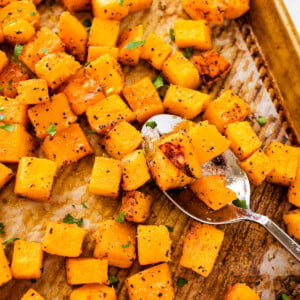
Roasted Butternut Squash
Ingredients
- 1 medium butternut squash
- 1 Tablespoon avocado or olive oil
- 1 teaspoon sea salt
- 1 teaspoon pepper
Instructions
- Preheat oven: Preheat oven to 400°F.
- Prep squash: Prepare the squash by peeling it, cutting it in half and scraping out the seeds.
- Cut squash: Cut the squash into 1 inch cubes. Add to a bowl and toss with oil, salt and pepper. Spread the cubes onto a baking sheet.
- Roast: Roast the squash for 30-40 minutes, turning once or twice, until all the pieces are tender and some have brown spots.
- Serve: Serve warm as a side dish or use in a recipe that calls for roasted squash.
Video
Notes
- Too hard to chop? If your butternut squash is just way too hard to cut with the knife you’re using, you can use the microwave to soften it up first! Poke about 4-5 holes throughout the squash and microwave for 3 minutes. Let cool and then chop.
- Don’t need cubes? You can also just roast each half of the squash instead of chopping into cubes. Prep the squash by peeling, cutting in half lengthwise and scraping out the seeds. Then coat with olive oil and sprinkle with sea salt. Roast at 400ºF for 30-40 minutes!
Nutrition
Nutrition information is automatically calculated, so should only be used as an approximation.
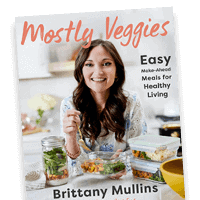
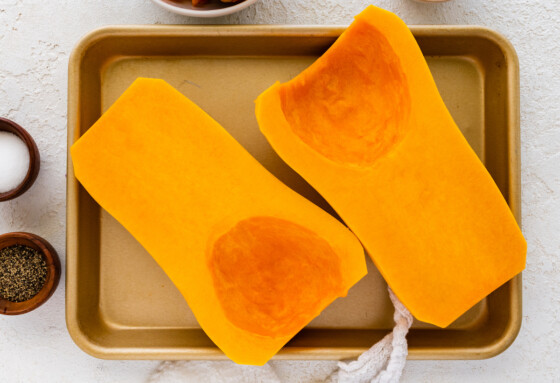
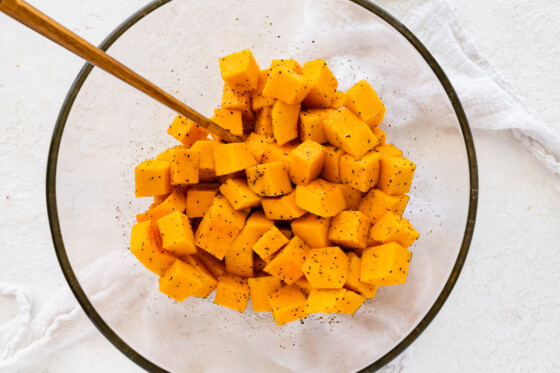
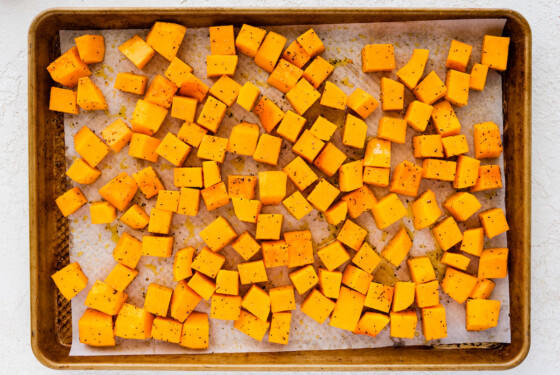
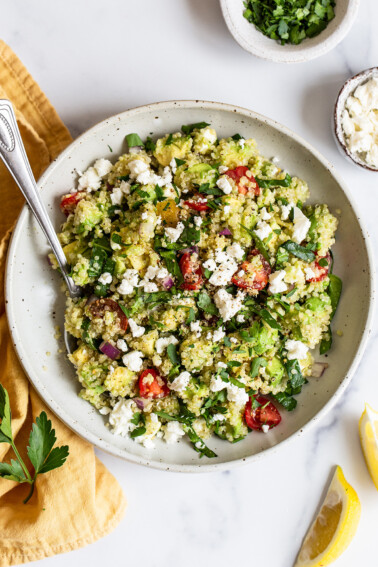
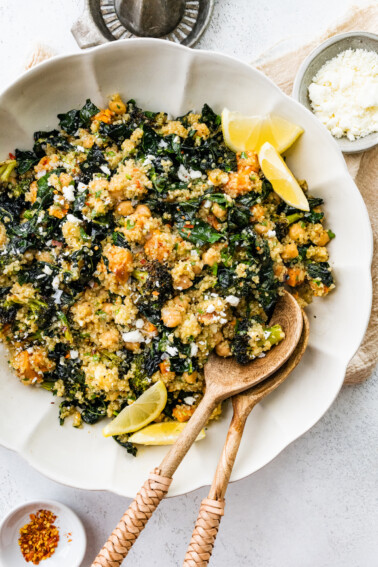
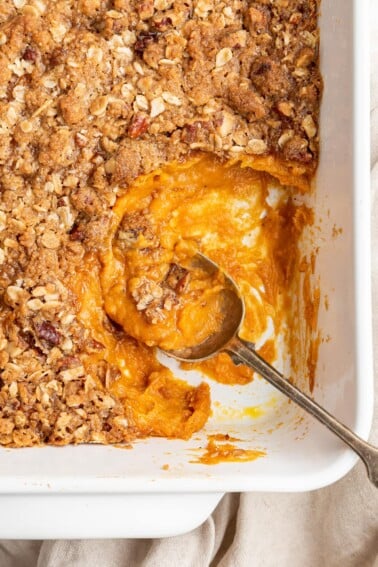
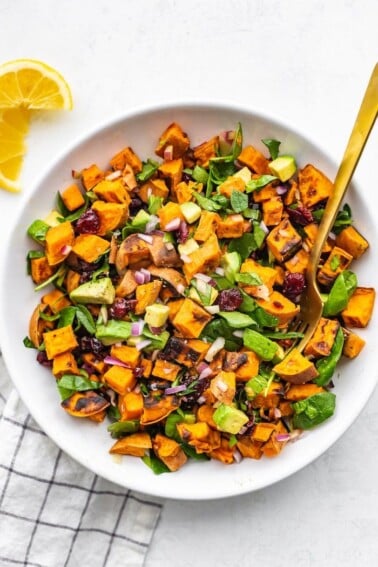
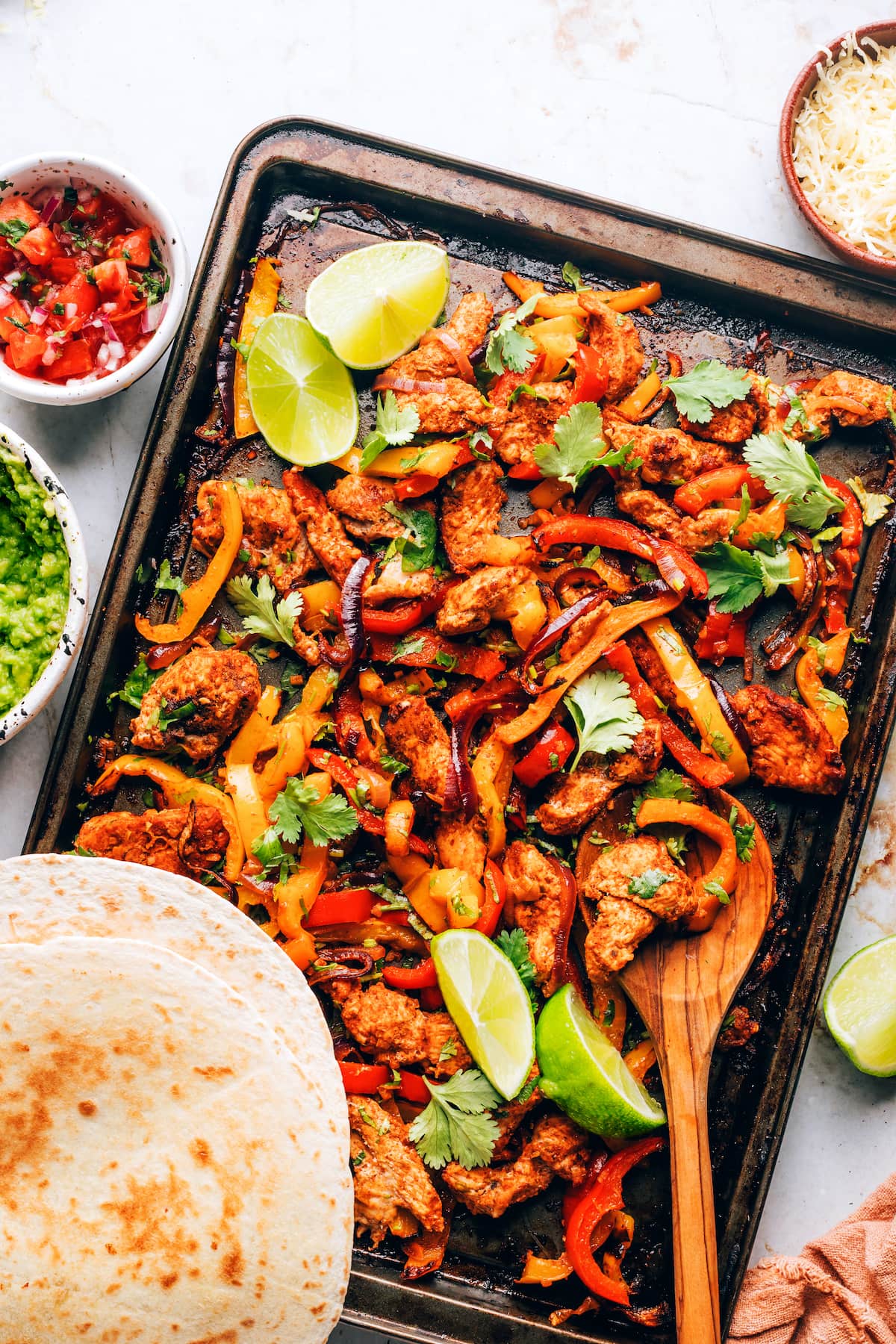






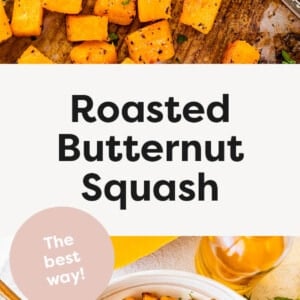
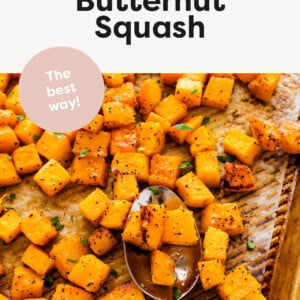
I loved this! Do you do any lactation recipes??
Hey Lanham! Yes, I have a lactation smoothie, lactation cookies and lactation bites.
My absolute favorite recipes with butternut squash. Complete yum 🤗
Roasted butternut squash makes a great base on top of your cauliflower crust pizza!
Ohh I bet!! I’ll have to try it. 🙂